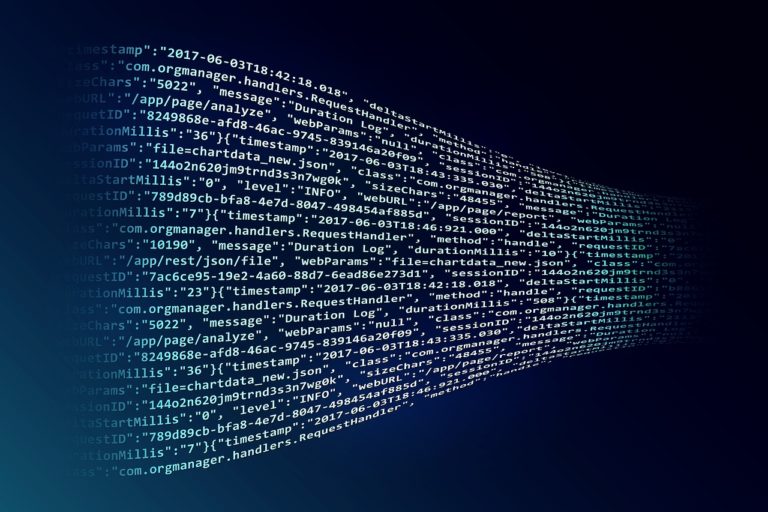
With all the data that large companies and government departments have to hold, business problems become more complex as the security of the data held is paramount. You need to know what data you hold, where you hold it and why you need it, but using new technologies can help rather than hinder when it comes to the massive amount of information that you have to store. If you take advantage of big data analysis, it can help with cybersecurity implications and ensure that both your compliance and your c-level executives are better placed to make smarter business decisions.
What is Big Data?
Big data is a term that encapsulates a large amount of data that is stored by companies worldwide and the ability to mathematically analyze it so that patterns and trends can be observed. IBM has broken this down into four dimensions: volume, velocity, variety and veracity. Volume refers to the scale of data and also the number of sources. As expected, velocity refers to the speed with which data can be collected, variety takes into consideration the different formats that data can be found in and veracity is the uncertainty about the accuracy of the data held.
Major Issues with Analysis
– Variability : The hardest part of the big data analysis is related to the variability of data and how it can change during processing. It is not exactly the same as variety although it is related. Variety refers to different types of data such as text, images or audio, while variability is data whose meaning may not stay the same.
Take the word ‘run’ as an example. If this were to be stored as a data point, it can be difficult to know if it relates to the act of running, a run-in cricket, a boat running rapids, a car running the lights or one of the other meanings that this word has. If you collect images and videos about the word run they could be related to each other or not, and the analysis has to know the difference and understand the context. This obviously results in highly complex analysis and it can be tricky to cope with this variability.
– Structured and Unstructured Data : Another issue is whether the data is structured or unstructured. If data is easily displayed in tables then it can be ordered and processed very simply in the same way that we use spreadsheets. Unfortunately, the majority of data is not ordered like this which can make it difficult to organize.
Sometimes, the data can be both structured and unstructured. Using emails as an example, these have distinct values in the ‘from’ and ‘to’ fields as well as the subject lines, but the text contained within is completely unstructured. This makes part of it easy to analyze but not all of it, and images are similarly difficult to compartmentalize.
Big Data Analysis
Analysis is split into two main areas to enable you to predict what might happen to your systems and also inform your decision-making process. This can be particularly useful in the case of cybercrime as you can gain insights before you have been attacked, enabling you to protect your systems in advance.
– Predictive and Prescriptive Analytics: Predictive analytics uses mathematical modeling and historical data to predict possible future events such as new types of ransomware attacks. Prescriptive analytics, however, models the data so that it can suggest best practices and recommend decisions that would be the most appropriate.
Shortcuts to Making Better Business Decisions and More Thorough Standards
– Compliance: The best way to be effective when it comes to security and to comply with the standards and regulations that you are governed by is to be thorough and use all the technological advantages you can. It is possible to automate such activities as there is software available that will compare data for many different regulations including NIST and FedRAMP. Aggregating the information means that it can help you gain better insights into the data you hold and the security that it will require to prevent any breaches. The prescriptive parts of it will collect data from across your company or government department which will also help you prioritize your compliance tasks.
Being able to simplify the accumulation of data for audits and make use of predictive and prescriptive analysis means that you can save time and be more accurate in your compliance processing. As long as you are creating a strong approach to security it becomes easier to maintain compliance, and that includes updating any systems with the latest patches and software releases and having continuous security monitoring. Technology can cause headaches with cybersecurity, but utilizing big data so that you can make better business decisions and protect yourself against breaches can help prove your compliance at audit time.
Author Bio

Ken Lynch is an enterprise software startup veteran, who has always been fascinated about what drives workers to work and how to make work more engaging. Ken founded Reciprocity to pursue just that. He has propelled Reciprocity’s success with this mission-based goal of engaging employees with the governance, risk, and compliance goals of their company in order to create more socially minded corporate citizens. Ken earned his BS in Computer Science and Electrical Engineering from MIT. Learn more at ReciprocityLabs.com
This is an article provided by our partners’ network. It might not necessarily reflect the views or opinions of our editorial team and management.
Contributed content

Founder Dinis Guarda
IntelligentHQ Your New Business Network.
IntelligentHQ is a Business network and an expert source for finance, capital markets and intelligence for thousands of global business professionals, startups, and companies.
We exist at the point of intersection between technology, social media, finance and innovation.
IntelligentHQ leverages innovation and scale of social digital technology, analytics, news, and distribution to create an unparalleled, full digital medium and social business networks spectrum.
IntelligentHQ is working hard, to become a trusted, and indispensable source of business news and analytics, within financial services and its associated supply chains and ecosystems











